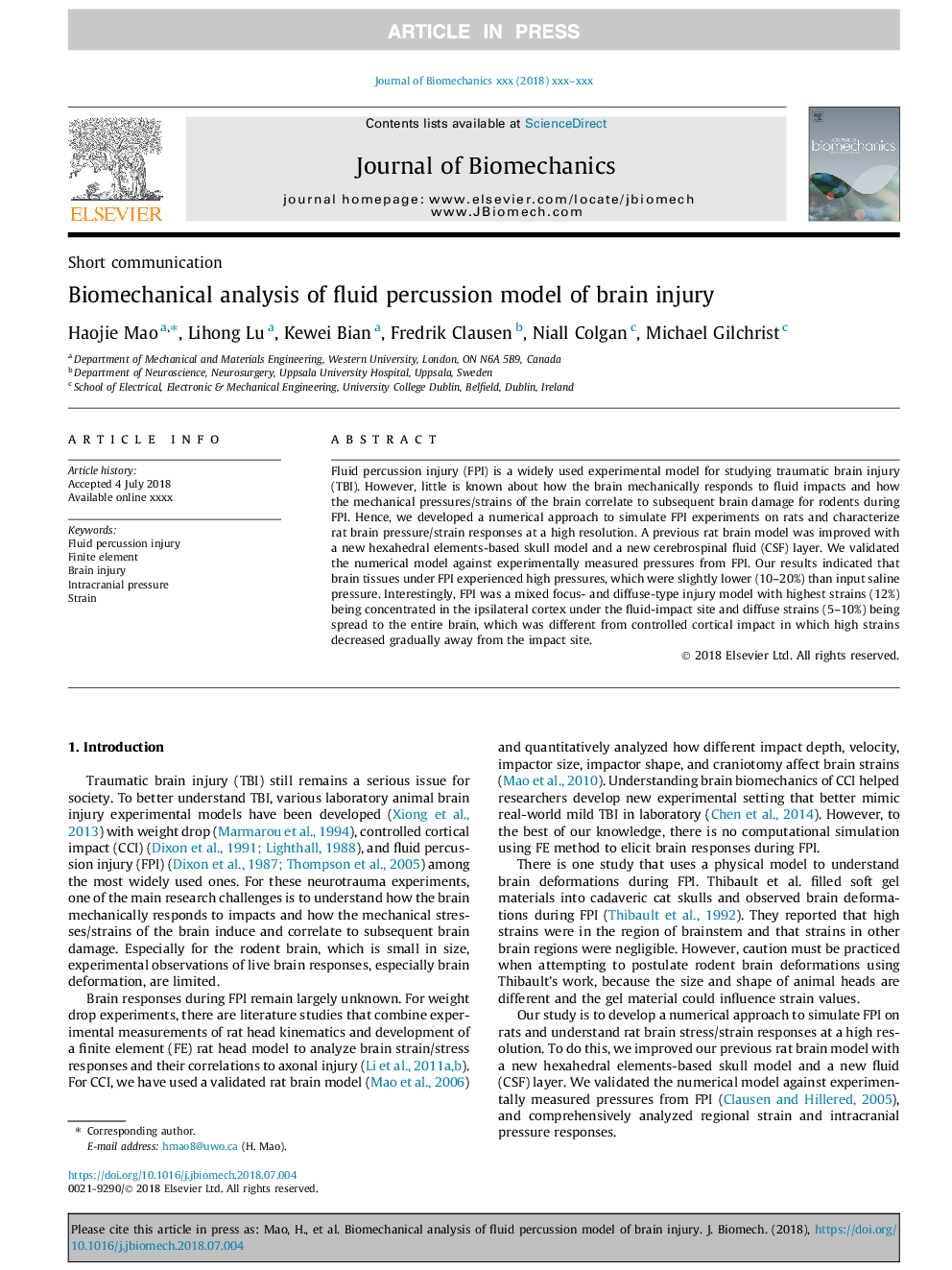| Article ID | Journal | Published Year | Pages | File Type |
|---|---|---|---|---|
| 7235687 | Journal of Biomechanics | 2018 | 5 Pages |
Abstract
Fluid percussion injury (FPI) is a widely used experimental model for studying traumatic brain injury (TBI). However, little is known about how the brain mechanically responds to fluid impacts and how the mechanical pressures/strains of the brain correlate to subsequent brain damage for rodents during FPI. Hence, we developed a numerical approach to simulate FPI experiments on rats and characterize rat brain pressure/strain responses at a high resolution. A previous rat brain model was improved with a new hexahedral elements-based skull model and a new cerebrospinal fluid (CSF) layer. We validated the numerical model against experimentally measured pressures from FPI. Our results indicated that brain tissues under FPI experienced high pressures, which were slightly lower (10-20%) than input saline pressure. Interestingly, FPI was a mixed focus- and diffuse-type injury model with highest strains (12%) being concentrated in the ipsilateral cortex under the fluid-impact site and diffuse strains (5-10%) being spread to the entire brain, which was different from controlled cortical impact in which high strains decreased gradually away from the impact site.
Related Topics
Physical Sciences and Engineering
Engineering
Biomedical Engineering
Authors
Haojie Mao, Lihong Lu, Kewei Bian, Fredrik Clausen, Niall Colgan, Michael Gilchrist,
